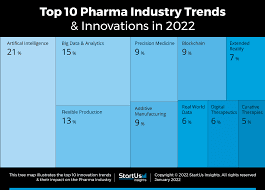Evolution of HR Functions – Asrar Qureshi’s Blog Post #1080
Evolution of HR Functions – Asrar Qureshi’s Blog Post #1080
Dear Colleagues! This is Asrar Qureshi’s Blog Post #1080 for Pharma Veterans. Pharma Veterans Blogs are published by Asrar Qureshi on its dedicated site https://pharmaveterans.com. Please email to pharmaveterans2017@gmail.com for publishing your contributions here.
 |
| Credit: Anna Tarazevich |
 |
| EqualStock IN |
 |
| Credit: Ron Lach |
Preamble
The role of Human Resource (HR) managers has undergone a dramatic transformation over the past two decades. Once primarily seen as administrative professionals handling payroll, compliance, and hiring, HR managers have now become strategic business partners, culture architects, and drivers of digital transformation. This shift has been fueled by technological advancements, evolving workplace expectations, globalization, and a stronger emphasis on employee experience.
From Administrative to Strategic HR
Long before, HR used to be Personnel Division which only did documentation of hiring, transfers, promotions, separation etc. Even after HR came into being, it was largely transactional, focusing on hiring, compliance, and benefits administration.
However, HR now plays a strategic role, contributing to business decisions, talent strategy, and organizational culture. HR leaders now sit at the executive table, influencing growth, innovation, and company direction.
This is the single most significant development that has taken place in the HR function. Because everything else has developed around this basic premise. Let us see, what strategic shifts have taken place.
HR Planning
HR is now required to do and get HR planning done for the next three years in good companies, or for a year in lesser companies. HR planning does not mean counting the numbers only, it means looking at present positions, visualizing organization plans for the next years, calculating new positions, their financial impact, and relating it all to business. HR planning may also include job changes, changes of job descriptions, job enrichments etc. Time frames are decided, and HR staff works accordingly to ensure on time hiring.
HR Reporting
HR now makes several reports. For example, Hiring Report shows how many hirings were done in a particular period. Turnover Report shows how many employees left the organization from various departments. Comparison may be done between departments and periods and then analysis should be done to understand the reasons for turnover, if it is beyond acceptable limits.
Climate Surveys
HR is required to do climate survey periodically to assess the employees morale and engagement level. This survey helps to understand how employees are feeling. It also gives important clues about intradepartmental and interdepartmental environment and working atmosphere. Coordination and cross-functional activities are also indicated in such surveys. Responses to various company policies is collected and policies may be amended if needed.
Overtime Control
Overtime control is particularly important in manufacturing organizations. Why was overtime done, was the need real, could it be avoided with better planning, which employees get overtime, are some questions which should be routinely raised about overtime.
Talent Acquisition & Recruitment
Previously, job postings were mainly on job boards and newspapers. Recruitment was resume-based, and interviews were traditional. Now: Companies use AI-driven hiring, social media recruiting (LinkedIn, Twitter), data-driven candidate screening, and skills-based assessments. Hiring of targeted talent is now a major activity of HR.
Employee Experience & Well-being
Employee expectations have changed, forcing HR to prioritize employee experience (EX), work-life balance, and well-being. Previously, entire focus was on salary, promotions, and compliance. Now, HR drives employee engagement, mental health programs, hybrid work models, and personalized career development. Companies invest in wellness initiatives, flexible benefits, and employee assistance programs to attract and retain talent.
Performance Management: From Annual Reviews to Continuous Feedback
For a long time, annual performance appraisals were the norm, with rigid evaluation systems. Real-time feedback, continuous performance management, and 360-degree reviews have replaced outdated models. HR leads agile goal setting, employee development, and coaching-based leadership.
Performance is high on the agenda of any organization anyway. It has become crucial to not just monitor but ensure that employees perform to their optimum level.
HR as a Change & Crisis Management Leader
HR managers now play a central role in business resilience, crisis management, and organizational change. HR's role in crisis management used to be limited but now HR leads companies through pandemic responses, digital transformation, mass layoffs, M&A transitions, and workplace adaptability strategies.
Change is a difficult process and needs all hands-on deck to make it happen. HR, by virtue of its connection with every employee should be a key player in change process.
HR Limitations
Although, HR is now involved in so many vital functions, the HR staff with adequate expertise is not easily available. HR’s first challenge is to find talent for its own function. Many young people are now aspiring to join HR, and they have degrees in HR, but they need to gain experience to become effective.
Senior managers in HR are mostly from the old guard who have two issues: one, they themselves do not understand the new developments taking place at mindboggling pace; two, they cannot train new people as they don’t have knowledge.
Sum Up
Over the past 20 years, HR has evolved from an administrative function to a strategic powerhouse that influences business success, employee well-being, and workplace transformation. The future of HR will be shaped by AI, skills-based hiring, employee experience innovation, and ethical workforce practices. The HR leaders who adapt to these changes will be the ones driving future-ready organizations in the next decade.
Concluded.
Disclaimers: Pictures in these blogs are taken from free resources at Pexels, Pixabay, Unsplash, and Google. Credit is given where available. If a copyright claim is lodged, we shall remove the picture with appropriate regrets.
For most blogs, I research from several sources which are open to public. Their links are mentioned under references. There is no intent to infringe upon anyone’s copyrights. If, however, it happens unintentionally, I offer my sincere regrets.



Comments
Post a Comment